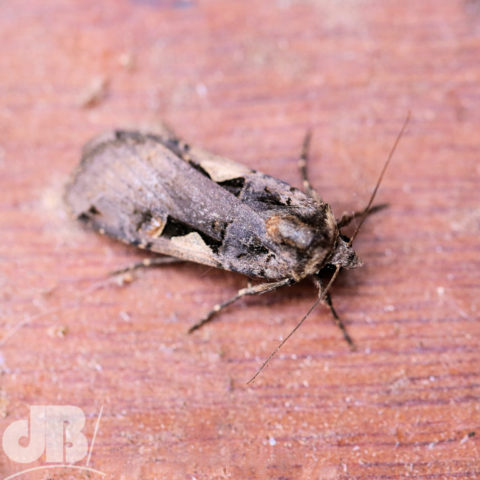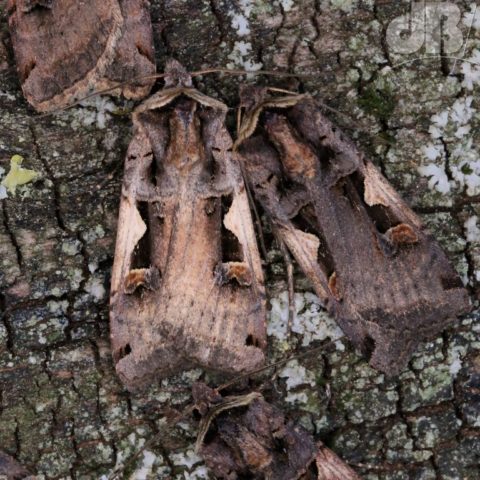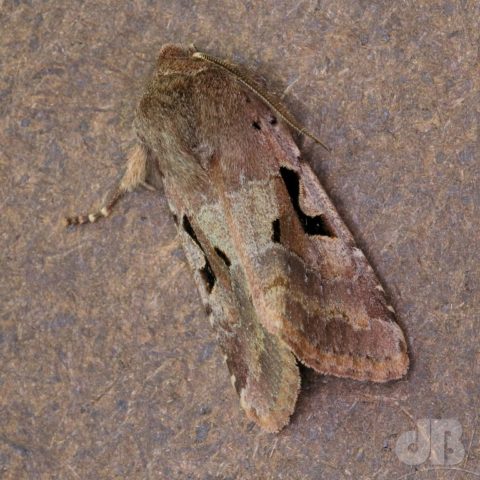The Setaceous Hebrew Character (Xestia c-nigrum) is a moth of the Noctuidae family of moths, also known as the owlets. It is relatively common in Europe, Asia, and is also found in North America. Its wingspan ranges from 35 to 45 millimetres. This species flies for two seasons each year – May to June and then again in greater numbers from August to September. They are attracted to light and enjoy the flowers of buddleia bushes, ivy, and ragwort. If you’re a moth-trapper, you will have seen dozens if not hundreds in your trap in late summer.

So far so standard. But, it’s that name that intrigues me. Moths, of which there are some 2600 different species in the UK alone have some rather fascinating names – Map-winged Swift, Variegated Golden Tortrix, Oak Processionary, Blood-vein, and the rather mundane sounding, Least Carpet – to name but a few.

The word “Setaceous”, simply means bristly. But, the “Hebrew Character” part of this moth’s name refers to the markings on its wings. The forewings of this species are reddish-brown and bear a dark, almost black, mark that resembles the Hebrew letter nun, with a pale cream-coloured area adjacent to this mark.
 Not to be confused with a second moth in the Noctuidae, the Hebrew Character, Orthosia gothica, that also bears a Hebrew nun on each forewing, although the two species are not particularly closely related despite appearances. It’s interesting to note (per Matthew Oates in his book In Pursuit of Butterflies) that The Setaceous Hebrew Character was the nickname of lepidopterist, entomologist, birdwatcher, and chemist Baron Charles de Worms (1904-1980), a balding and eccentric character of Austrian-Jewish heritage who worked at Porton Down and was a cancer specialist.
Not to be confused with a second moth in the Noctuidae, the Hebrew Character, Orthosia gothica, that also bears a Hebrew nun on each forewing, although the two species are not particularly closely related despite appearances. It’s interesting to note (per Matthew Oates in his book In Pursuit of Butterflies) that The Setaceous Hebrew Character was the nickname of lepidopterist, entomologist, birdwatcher, and chemist Baron Charles de Worms (1904-1980), a balding and eccentric character of Austrian-Jewish heritage who worked at Porton Down and was a cancer specialist.
